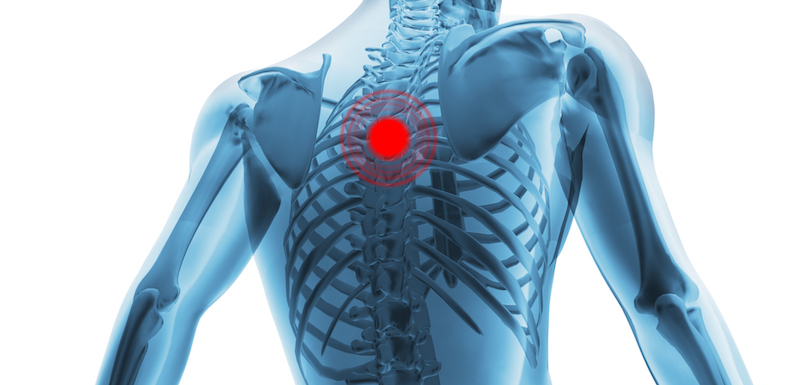
If upper back pain develops without any signs of an emergency, most people can safely try to alleviate the pain on their own. Several self-care treatments for upper back pain exist. In some cases, a combination of one or more treatments is needed to help reduce the pain.
Self-Care for Upper Back Pain
Some early treatment options to try when upper back pain develops include:
- Rest and activity modification. If the pain gets worse with certain movements or activities, such as doing household chores or participating in hobbies, a short rest period of a day or two may help. For example, if working in the garden exacerbates the pain, avoid that activity rather than push through the discomfort. After an initial rest period, trying to become active again is advised. Resting for too long can cause muscles in the back to become weaker, which could lead to more pain.
- Ice and/or heat therapy. Ice may be applied to reduce swelling within the first couple days of the pain starting, and heat is typically recommended after the first 48 hours. Other recommendations simply let patients choose whether they find more relief from ice or heat. Regardless of which temperature is preferred, it is important to limit applications to 20 minutes at a time and check the skin regularly to avoid tissue damage.
- Over-the-counter (OTC) medications. Various pain medications are available at stores for purchase without a doctor’s prescription. Most of these OTC medications work by reducing inflammation in the body or preventing pain signals from reaching the brain. Common OTC medications that may help reduce upper back pain include aspirin (e.g. Bayer or Bufferin), ibuprofen (e.g. Advil or Motrin), naproxen (e.g. Aleve or Naprosyn), and acetaminophen (e.g. Tylenol). Even though these medications do not require a prescription, it is important to read and follow the directions on the label to avoid serious side effects.
- Massage. Many people find that a massage can provide relief from back pain. Even if the effects are temporary, a good massage can help loosen tight muscles and get more blood flowing to the painful area. A few options for massaging the upper back include self-massage with a foam roller or ball, having a willing friend or family member provide a message, or seeking out a professional.
Sometimes trial and error are needed to find which treatment or combination of treatments work best for a specific type of upper back pain.
Lifestyle Changes to Reduce Upper Back Pain
Some risk factors from daily routines are known to increase the risk of back pain. Making one or more of the following lifestyle changes could help reduce the risk of developing upper back pain:
- Exercise and stay active. Going for regular walks or hikes, participating in noncontact sports, strength training, and stretching can all be beneficial for conditioning the upper back. Keeping the back strong and flexible helps maintain spinal function and reduces the risk of developing pain. If trying to transition from a sedentary lifestyle to a more active one, start slowly and gradually build up endurance.
- Practice better posture. Keeping the head in a neutral position with the ears directly over the shoulders tends to put the least amount of stress on the neck and back. Using good posture throughout the day—such as when sitting, walking, or lifting heavy objects—can reduce the risk of developing pain. Simple changes could include setting up an ergonomic workstation at work, bending with the knees when lifting heavy objects, and placing straps over both shoulders instead of just one when wearing a backpack.
- Quit smoking. Multiple studies have shown that people who smoke are more likely to have chronic back pain and accelerated degeneration of spinal discs. One of the suspected reasons is that nicotine restricts blood flow, which can reduce the flow of nutrients that go into the discs.
In addition, an overall healthy lifestyle of eating a well-balanced diet, getting the recommended amounts of sleep, and managing stress can help reduce the risk of developing back pain.
If you are suffering from pain, please contact our office at (516) 419-4480 or (718) 215-1888 to arrange an appointment with our Interventional Pain Management Specialist, Dr. Jeffrey Chacko.













